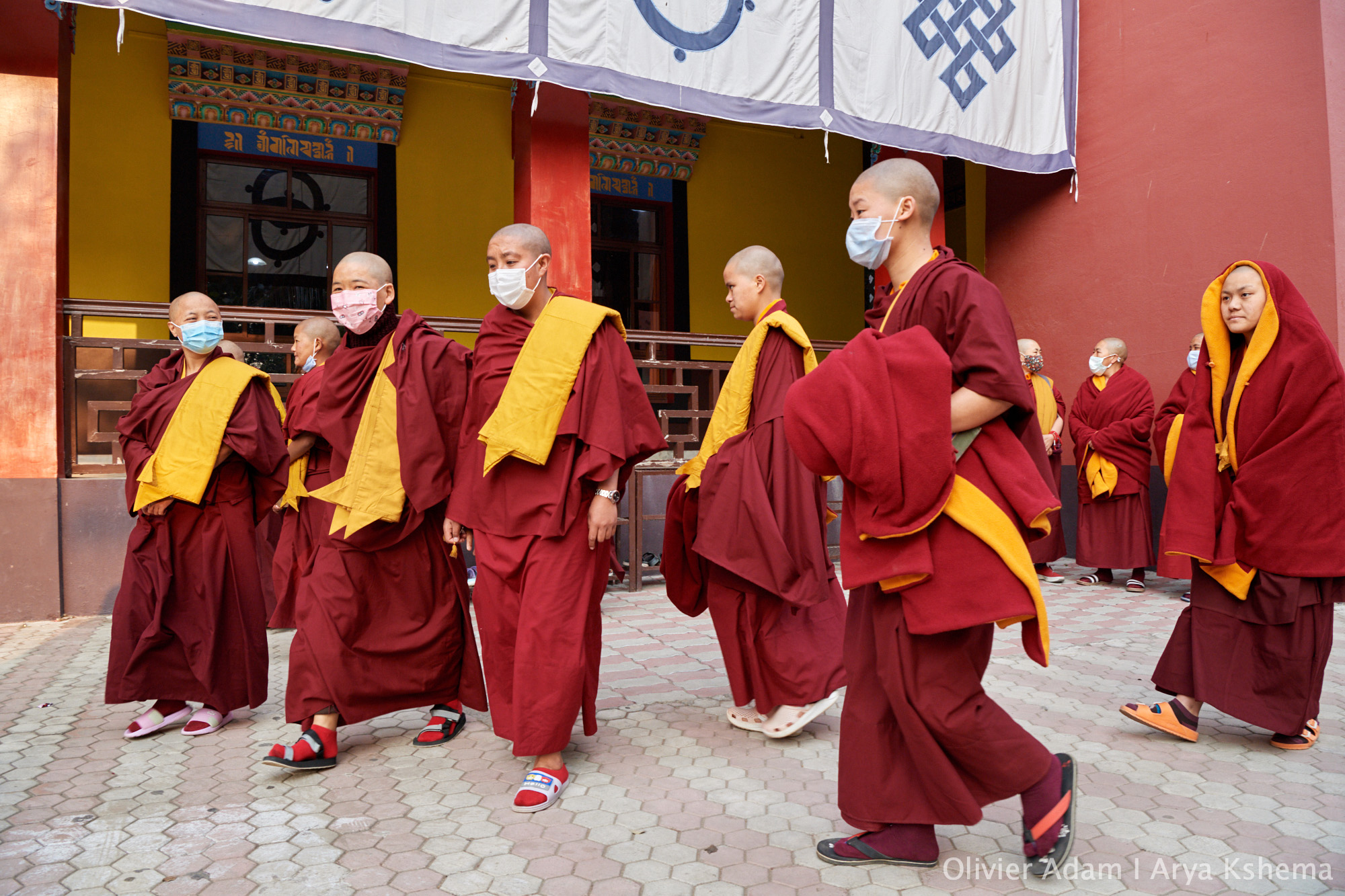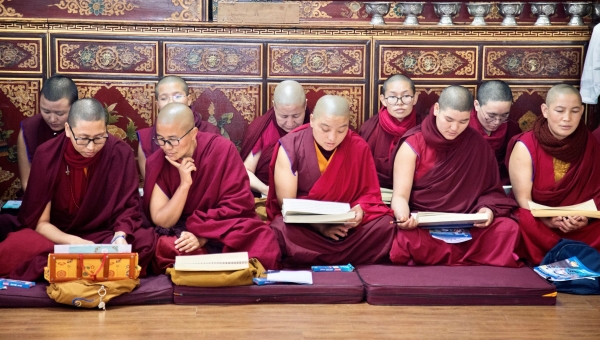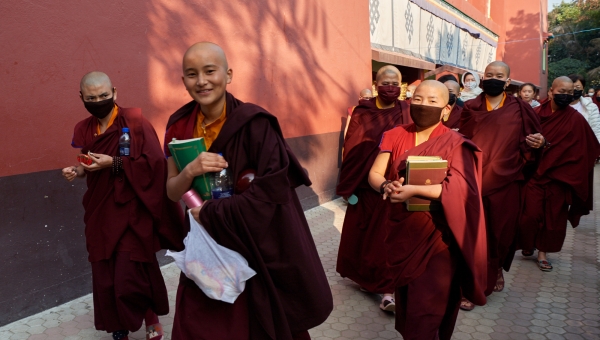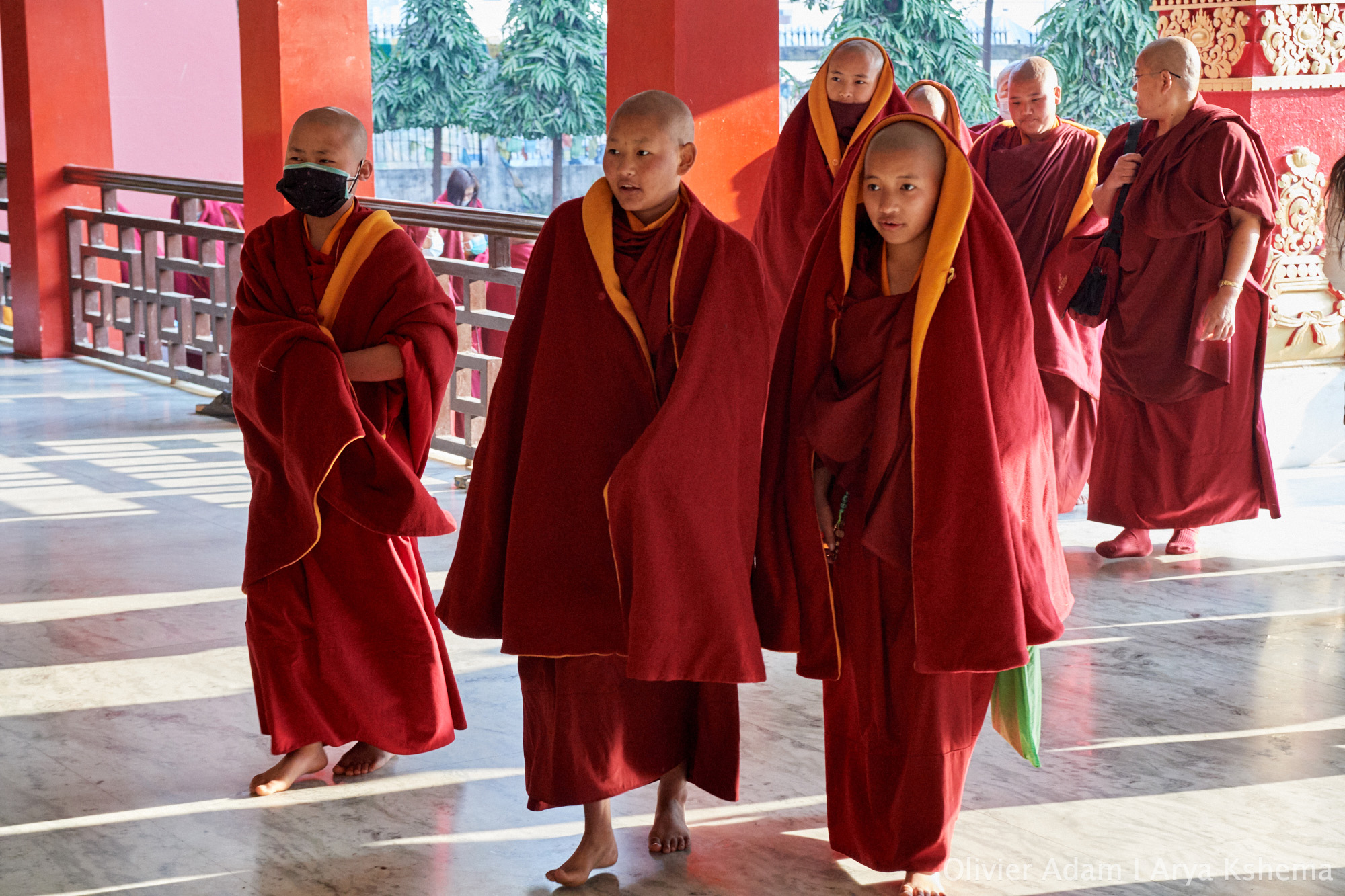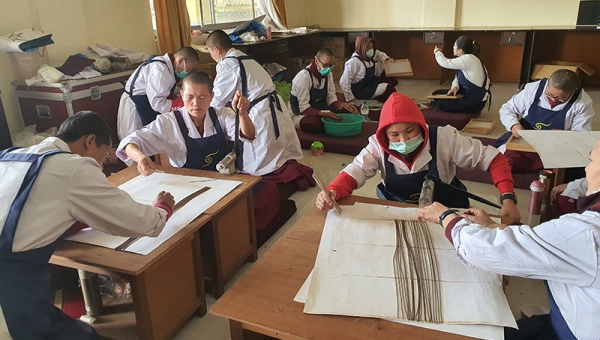Tergar Shrine Room,
Bodhgaya,
February 13, 2020
The opening ceremony began at 8.00am when a portrait of His Holiness the 17th Gyalwang Karmapa was brought in procession into the shrine room and placed on the high throne. H.E. Gyaltsab Rinpoche followed the portrait onto the stage, and then took his seat in the main auditorium below.
Flawlessly, the umdzes from Tilokpur Nunnery began reciting prayers, including the Four Mothers, Refuge and Bodhichitta, the Four Immeasurables, and the Praise of Sri Samantabhadra with Aspirations. The morning continued with a combined mandala offering to His Holiness the Gyalwang Karmapa and to H.E. Gyaltsab Rinpoche. Then everyone enjoyed sweet butter rice and Tibetan tea in celebration.
During a short speech, Gyaltsab Rinpoche explained that he was attending the opening ceremony to say a few words at the request of His Holiness, and then gave the historical background to the Kagyu tradition of study, emphasised its importance and explained its place on the path to liberation.
He emphasised how within the Karma Kagyu lineage, the Karmapas viewed study of the dharma as very important and instituted shedras in Tibet. Within these shedras students engaged in listening, explanation and debate. Although the teachings declined in central Tibet, they continued to spread in Kham. In particular, during the time of the 16th Karmapa, both at the old Rumtek Monastery and at the new Rumtek Monastery, the tradition of studying in depth continued. Also, during his time, many retreat centres and so forth were established, so the teachings spread and flourished greatly. Now, because of the facilities that the Gyalwang Karmapa has provided, the teachings have also expanded greatly, many people are studying, learning the texts, and learning Buddhist philosophy.
Having given a general introduction, Rinpoche now addressed the shedra nuns directly.
So in general the Khenpos have been teaching you in the shedras and so forth so you have been receiving the teachings but there is still a good reason to hold this winter dharma gathering. When we study the Dharma we need the three types of prajna: the prajna born of listening; the prajna born of contemplation; and the prajna born of meditation.
So, first we receive teachings. We go to classes and receive teachings every day and we develop the prajna of listening. Then, as we listen, we develop an understanding and this becomes our prajna of contemplation. We contemplate the teachings and this becomes the prajna of contemplation. First we need the prajna of listening and, as that it increases it becomes the support or basis, and as that increases it becomes the prajna of contemplation.
As the Bhagawan Buddha himself taught, Rinpoche continued, we need to investigate and examine the teachings for ourselves. The Buddha taught that first of all we must use logic to examine the teachings because if we accept them on the basis of faith, only because the Bhagawan Buddha taught them, we will not realise their meaning and develop true certainty. The analogy used is testing the teachings in the same rigorous way we would test for gold.
The role of debate is integral to the process:
When we engage in debate, what we primarily do is increase our prajna of contemplation. We take positions and we hold positions, and instead of relying primarily on words, we rely on the meaning. That increases our prajna of contemplation. In this way when we receive teachings from our khenpos, we are developing primarily the prajna born of listening and then, as we engage in debate, we are primarily emphasising the prajna born of contemplation. As we investigate and analyse the teachings, we are developing the prajna born of contemplation.
When we have these two types of prajna—the prajnas born of listening and of contemplation— we can rest in the nature of that meaning one-pointedly and that brings the prajna born of meditation. This is increased by our activity in the prajnas of listening and contemplation….
If we increase our prajna of listening and increase our prajna of contemplation, and then practise meditation, we will reach the paths of seeing and meditation. As we increase our prajnas of listening and contemplation, we reach the path where we develop the prajna of meditation and that is the path of seeing; we are seeing with our perception, so at that point we no longer need to engage in analysis.
Rinpoche asserted that developing the prajnas of listening and contemplation form a basis which can last for generations. It can increase the teachings and preserve them, which is one of the reasons for holding the Arya Kshema. Although the Gyalwang Karmapa is abroad, he is watching and will see the debates, so Rinpoche asked the nuns to debate well in order to please The Karmapa.
Finally, Rinpoche asked the nuns to take good care of their physical well-being, because in order to work on listening and contemplation they needed to be in good health, and wished them well for the Gunchö.
The ceremony concluded with long-life prayers for His Holiness the 14th Dalai Lama and the 17th Karmapa, the Long Praises to the Kagyu Forefathers, Marpa, Milarepa and Gampopa, written by the Eighth Gyalwang Karmapa, Verses in Praise of the Incarnations of the Karmapa, and finally Praises of the Buddha from the Kangyur.
After a short tea-break, the nuns continued their prayers until lunchtime, reciting the Twenty-One Praises of Tara and Prostrations and Offerings to the Sixteen Arhats to create auspiciousness for the upcoming teachings, study and debates of the winter gathering.
(Click on the image below to view slideshow/photo album)
